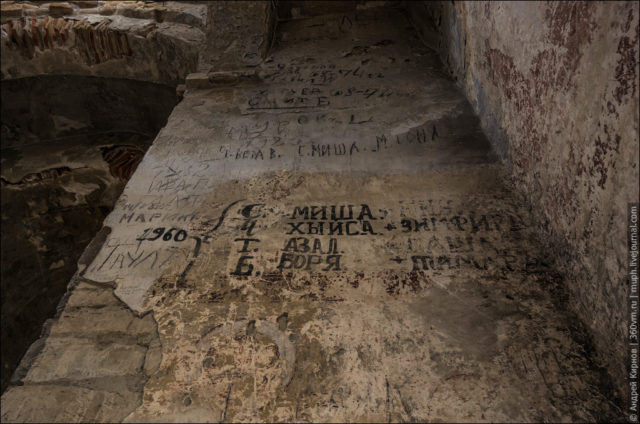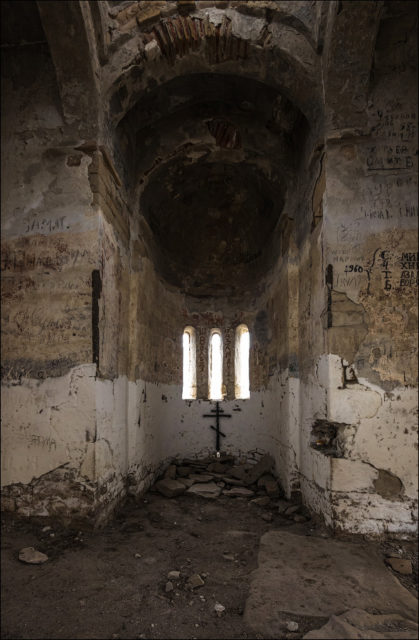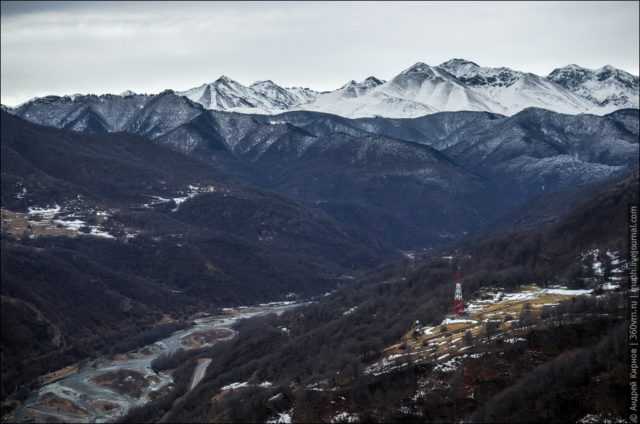Sentinsky Church lies in the mountains of the Northern Caucasus, Russia. It stands proudly on a high rocky cliff of the Burun-Syrt massif overlooking the valley of the Teberda river.
It is something of a miracle that Sentinsky Church has survived to this day. Throughout its history, which spans more than a thousand years, it has lived through the Tatar-Mongol invasion, Islamization, the Russo-Turkish war, the Caucasian War, the church plunders of the Soviet regime, the Second World War, and the chaos of the 1990s. Amazingly, it is still standing and is in fairly good condition.


The church is located near the village of Nizhnaya Teberda, 11 miles south of the town of Karachayevsk, in present-day Karachay-Cherkessia – a republic within the Russian Federation. Back in medieval times, it used to be part of Alania, a once-prosperous kingdom in the Caucasus.
By the 10th century, the dominion of the Khazar Khaganate over the Alans, which had lasted for two centuries, had finally ended. Alania was now independent and free to conduct its own policies. The Byzantine Empire rushed at the opportunity and began to build closer relations with Alania to establish a level of political and cultural influence in the region.
In 916, under the influence of the Byzantines, Christianity became Alania’s official religion, and Orthodox churches began to be erected across the kingdom.

Sentinsky Church was built in 967. The site was chosen carefully; the Teberda valley used to be part of a branch of the Silk Road, so the church, built on an elevation, provided an important strategic point along the route.
The church was built in the Byzantine style and is made out of limestone. Its structure forms an equilateral cross – an example of a “croix libre” church. It is a fairly small church; at its highest point, the dome is 33 feet above the ground. A metal cross once crowned the dome, but it has been dismantled, never to be replaced.
The porches on the western, northern, and southern sides were created much later, yet the exact date and who built these extensions remains unknown.

The walls of the temple were decorated with Byzantine frescoes but some elements demonstrate Georgian influence, suggesting that Georgian artists must have been involved in the decoration works alongside the Byzantines. This is not surprising because Alania developed closer relations with Georgia – its neighbor and an Orthodox country – throughout the 10th century. Unfortunately, the frescoes are now severely damaged and some have been completely lost.
Next to the church is a mausoleum, which was built in the 10th century for the burial of high priests and, possibly, other members of the social elite. To this day, it is not clear whether it was constructed before or after Sentinsky Church was built.

Even though Sentinsky Church was built in the 10th century, the history of the site runs much deeper. It used to be a place where pagan ceremonies took place. Archaeologists have discovered numerous burial sites dating back to the 5th-8th centuries, and the church itself was built on top of a pagan sanctum. This is known because, in its masonry, stone blocks with petroglyphic images of snakes and geometric patterns were found.
At the end of the 19th century, Sentinsky Church was renovated and altered by nuns from the nearby Spaso-Preobrazhensky Women’s Monastery. They repaired the roof, restored the porches, and remodeled the gables of the western, northern, and southern facades – these became rounded.

It was not until the 1970s that the site was thoroughly studied. Soviet archaeologists discovered a tomb beneath the southern porch. Inside were the remains of red silk fabric embroidered with strings of pure gold, a golden headpiece, and Byzantine coins dating to the times of emperor Basil II. Inside the mausoleum near the church, more Byzantine artifacts were discovered including a lead Byzantine cross and a copper top of a staff shaped like a five-pointed star.
Now, the church is abandoned, but from time to time people come here to pray. Despite the efforts of the local community to look after the church, it has suffered at the hands of vandals: its walls are covered with inscriptions.
Thank you to Andrey Kirnov for the photos and information! See more of his work here: muph









